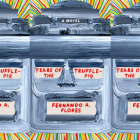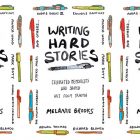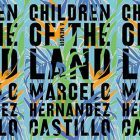Young Love and Frenzied Obsession in Andrea Abreu’s Dogs of Summer

Dogs of Summer
Andrea Abreu, translated by Julia Sanches
Astra House | August 2, 2022
In her debut novel Dogs of Summer, translated from the original Spanish by Julia Sanches, Andrea Abreu writes a rapturous story about the obsessive friendship between Isora and Shit, a pet nickname given to the narrator at the tender stage of entering adolescence, in the process providing an authentically complex portrayal of the desire of girls.
It is the summer of 2005, and the two best friends are living in a working class village in the Canary Islands. They fill their boredom by playing frisky games with Barbies and dreaming about ways to get to the beach, losing their sense of time under the scorching sun. Their relationship, though, runs deeper than just games: Shit has a pigeon-holed view of society—her home and village extending to “below the bar [that] was Doña Carmen’s house and beyond that [she] had no idea, because as far as [she] was concerned Doña Carmen’s house was the end of the world.” Instead, Shit experiences the world through the eyes of Isora, succumbing to liking things only if she gains Isora’s approval.
One day, Isora tells Shit that they are like a “pack of yogurts from the minimarket…that always come in pairs.” Their bond is consuming and goes beyond sharing hand-woven bracelets. Shit says, “i didn’t know the difference between me and isora sometimes i thought we were the same girl.” Shit believes that her happiness hinges on the precarious nature of Isora’s shifting mood, failing to see the line marking the two as separate entities. Even though Isora calls her by a curse word—out of a “small, shy, quiet affection”—Shit never doubts Isora’s intentions. Shit does all tasks assigned by Isora, at one point stuffing down dry pieces of cake to appease Isora, who was attempting to diet. In short: if Isora was going to jump off a cliff, Shit would be right behind her.
Soon, the two girls experience a melting of boundaries between platonic friendship and lust. Isora and Shit explore one another’s bodies but ignore the reality of their actions by never acknowledging the feelings they have for one another. Shit says that “boys grossed me out, but I thought I was supposed to fall in love with them.” Isora is her first love, even though Shit does not seem to recognize the experience for what it is at her young age. Shit sweeps her intimate feeling under the rug, thinking of Isora as just her domineering and spirited best friend.
In her 2017 essay collection, Too Much and Not the Mood, Durga Chew-Bose writes: “Because, as girls, we hold on to Forever… For now, however, is far more rational unit of measurement, and perhaps we should encourage much earlier in life because it doesn’t require the insurance of a necklace or bracelet, or any token really.” There is no version of existence for Shit without Isora, but, as Chew-Bose explains, experiences and people are finite. In the end, Isora fails to be Shit’s “Forever.” The narrative tracks the crumbling of the relationship throughout the summer days, leaving Shit alone walking towards their desired destination of the distant beach.
Abreu thus provides a unique perspective into romantic feelings buried within a friendship. Much like Edna O’Brien’s The Country Girls, Elena Ferrante’s My Brilliant Friend, and Lorrie Moore’s Who Will Run the Frog Hospital?, the novel is a portrait of the intensity of love, desire, and frenzied obsession at such a pivotal age.



